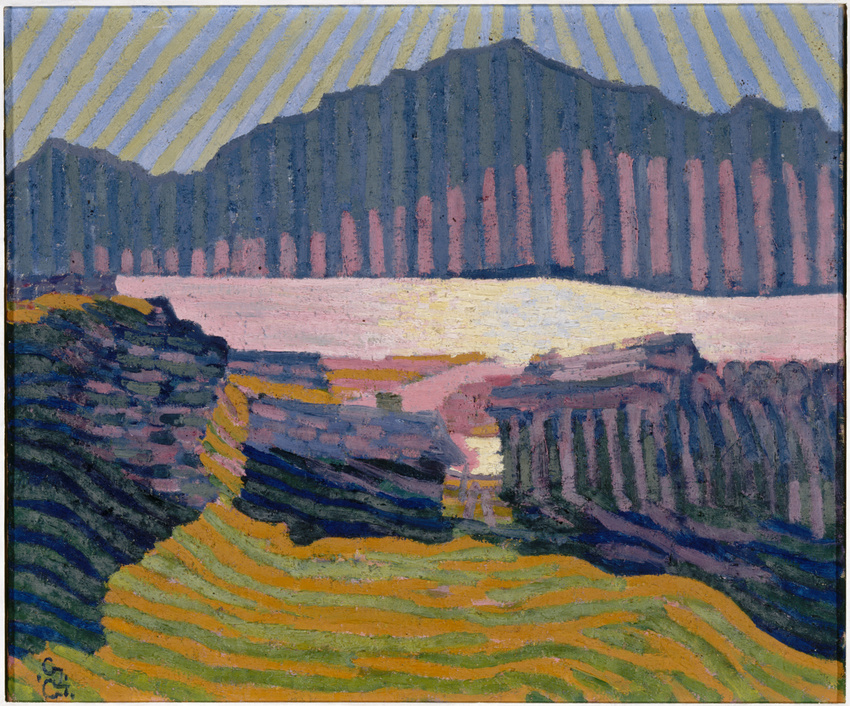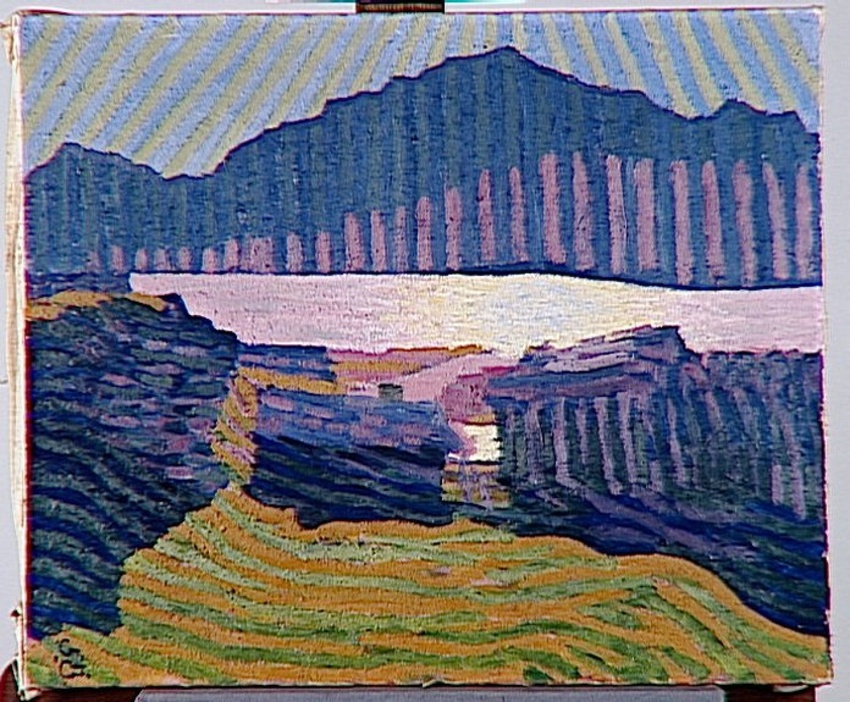Vue de Capolago
Less well known in France than his sons Alberto and Diego, Giovanni Giacometti was nonetheless a significant figure in the arts scene in Switzerland in the early 20th century. Returning to Switzerland after a stay in Paris to pursue the studies he had begun in Munich, the young Giacometti met Giovanni Segantini, who became his true mentor. Although throughout his career Giacometti continued to paint the alpine landscapes that his master had taught him to see, he drifted away from Segantini's Divisionist technique as can be seen in this View of Capolago painted about 1907.
The painter was then in a period of experimentation. Through his friend, the painter Cuno Amiet, Giacometti discovered not only the work of Paul Gauguin but also – and above all – that of Vincent van Gogh. Van Gogh's decisive influence on Giacometti can be seen in the brushstrokes as well as in the use of highly expressive colour. The long coloured stripes used in this landscape are a direct echo of the stick-like strokes used by the Dutch painter. Although Giacometti was still interested in the representation of nature, he eliminated any trace of anecdote or illusion. His pictorial language became more synthetic and his palette bolder.
The painting is exhibited in its original white wooden frame, typical of those used by the painter after his discovery of Neo-Impressionism. This choice shows his keen interest in the perception of colour.


